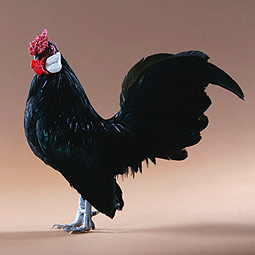
Sebright
Sebrights are bantams and used for ornamental purposes only as they are poor egg producers that lay 140 to 160 eggs per year. The birds are very inbreed and have the resulting poor egg fertility but the hens do make good mothers for raising other chicks. They originated in England, are very nervous birds that can fly quite well.
Following generations of inbreeding, the Sebright’s egg fertility success rate is also considered to be quite poor, despite this, they do make good mothers of young chicks. Sebright chicks have high mortality rates. but the adults are generally hardy birds. The breed is especially susceptible to Marek’s disease. It is a soft feather bird that is usually black, gold, and silver. Hens are usually around a pound or just over, roosters closer to one and a half pounds. They lay tiny creamy white eggs.








